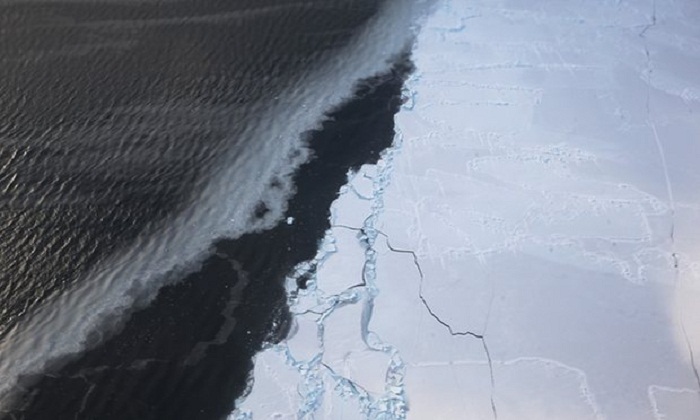Sea levels could rise by six to nine metres over time, new study warns

Previous research had shown that sea levels rose by several metres during the last interglacial (LIG), between 129,000 to 116,000 years ago, but until now the picture of how sea temperatures had varied over the same period had remained patchy.
The latest research, based on marine sediment core records from 83 sites, concludes that sea temperatures towards the end of the LIG were comparable to those seen today.
Rob DeConto, a climate scientist at the University of Massachusetts, Amherst, who was not involved in the research said: “This tells us that the big ice sheets are really sensitive to just a little bit of warming. That’s a really powerful message.”
During the LIG, the Earth’s climate warmed due to a shift in the tilt of the planet, which led to average temperatures around 2C warmer than today. The hippopotamus was found as far north as the river Thames and forests reached well into the Arctic Circle.
Scientists view the period as an important reference for how the Earth’s oceans and atmosphere might respond to the current warming trend in the future.
The study, published in the journal Science, compared records from 83 marine sediment core sites to data from 1870-1889 (pre-industrial times) and 1995-2014.
Records of both the local surface temperatures and global sea levels are locked into the layers of sediment. Surface-feeding plankton act as natural thermometers as the ratio of magnesium to calcium accumulated in their shells depends on the water temperature. Another plankton species acts as a gauge for the extent of continental ice shelves. The ratio of two different forms of oxygen (O16 and O18) is different in continental ice sheets and seawater, so by tracking these ratios in the plankton, scientists can work out how much ice there was at a given point in time.
The analysis found that, at the onset of the LIG 129,000 years ago, the global ocean sea surface temperatures were similar to the 1870-1889 average. By 125,000 years ago, these had increased by 0.5C, reaching a temperature indistinguishable from the 1995-2014 average.
Sea levels respond directly to global temperatures, both through the melting of ice shelves and through the expansion of water as it warms. However, the process happens slowly, so the full extent of sea level rises may only become apparent hundreds or thousands of years into the future.
Professor Andrew Watson, a climate scientist at the University of Exeter, said: “The good news is that with luck it will continue to rise slowly, so that we have time to adapt, but the bad news is that eventually all our present coastal city locations will be inundated.”
A crucial unknown is the rate at which the ice sheets will melt in the future, and the latest findings do not have a direct bearing on this question, according to Jeremy Hoffman, a climate scientist at the Science Museum of Virginia and the paper’s lead author.
During the LIG, warming occurred over more than 10,000 years, meaning that changes to the global ice sheets could happen in parallel. The current warming trend has occurred over decades, and it is not clear how far behind the melting of ice will lag.
The UN estimates that global sea levels will rise between 13cm and 68cm by 2050 and a high profile paper by DeConto’s group last year predicted a two metre rise by the end of the century.
Louise Sime, head of palaeoclimate research at the British Antarctic Survey, said: “The rates of ice sheet loss are really difficult to predict. Estimates are anything from 200 to 7,000 years.”
The Science paper also highlights apparent deficits in most climate models, which fail to replicate the warming of the oceans seen in the sediment cores when they are applied to this period.
“This refined picture really clearly identifies that the modelling experiments do not create enough warming during the last interglacial,” said Hoffman.
One explanation is that the models are underestimating feedback mechanisms in the Earth’s system, such as the reduction of sunlight that is reflected back as ice melts, leading to an underestimation of how quickly ocean temperatures ramp up.
“We think there might be some process missing that we’re just not capturing,” said Hoffman. “If we’re missing something from this period of the Earth’s history, what might we be missing from future projections?”















































